- Home
- Gore Vidal
The Second American Revolution and Other Essays 1976--1982 Page 5
The Second American Revolution and Other Essays 1976--1982 Read online
Page 5
There were trolls in the cellar of Wilson’s psyche, and they tended to come upstairs “When I was suffering from the bad nerves of a hangover….” There is also an echo of Mrs. Dalloway’s vastation in the following passage: “Getting out of an elevator in some office building—I must have been nervously exhausted—I saw a man in a darkened hall—he was in his shirt sleeves with open neck, had evidently been working around the building—his eyes were wide open, and there seemed to be no expression on his face: he looked, not like an ape, but like some kind of primitive man—and his staring face, as I stared at him, appalled me: humanity was still an animal, still glaring out of its dark caves, not yet having mastered the world, not even comprehending what he saw. I was frightened—at him, at us all. The horrible look of the human race.”
As a critic, Wilson was not always at his best when it came to the design or pattern of a text—what used to be called aesthetics. He liked data, language. He did not have much sympathy for the New Critics with their emphasis on text qua text. After all, nothing human exists in limbo; nothing human is without connection. Wilson’s particular genius lay in his ability to make rather more connections than any other critic of his time. As Diderot said of Voltaire: “He knows a great deal and our young poets are ignorant. The work of Voltaire is full of things; their works are empty.”
But Wilson was quite aware that “things” in themselves are not enough. Professor Edel quotes from Wilson’s Princeton lecture: “no matter how thoroughly and searchingly we may have scrutinized works of literature from the historical and biographical point of view…we must be able to tell the good from the bad, the first-rate from the second-rate. We shall not otherwise write literary criticism at all.”
We do not, of course, write literary criticism at all now. Academe has won the battle in which Wilson fought so fiercely on the other side. Ambitious English teachers (sic!) now invent systems that have nothing to do with literature or life but everything to do with those games that must be played in order for them to rise in the academic bureaucracy. Their works are empty indeed. But then, their works are not meant to be full. They are to be taught, not read. The long dialogue has broken down. Fortunately, as Flaubert pointed out, the worst thing about the present is the future. One day there will be no….But I have been asked not to give the game away. Meanwhile, I shall drop a single hint: Only construct!
The New York Review of Books
SEPTEMBER 25, 1980
Christopher Isherwood’s Kind
In 1954 I had lunch with Christopher Isherwood at MGM. He told me that he had just written a film for Lana Turner. The subject? Diane de Poitiers. When I laughed, he shook his head. “Lana can do it,” he said grimly. Later, as we walked about the lot and I told him that I hoped to get a job as a writer at the studio since I could no longer live on my royalties as a novelist (and would not teach), Christopher gave me as melancholy a look as those bright—even harsh—blue eyes can affect. “Don’t,” he said with great intensity, posing against the train beneath whose wheels Greta Garbo as Anna Karenina made her last dive, “become a hack like me.” But we both knew that this was play-acting. Like his friend Aldous Huxley (like William Faulkner and many others), he had been able to write to order for movies while never ceasing to do his own work in his own way. Those whom Hollywood destroyed were never worth saving. Not only has Isherwood written successfully for the camera, he has been, notoriously, in his true art, the camera.
“I am a camera.” With those four words at the beginning of the novel Goodbye to Berlin (1939), Christopher Isherwood became famous. Because of those four words he has been written of (and sometimes written off) as a naturalistic writer, a recorder of surfaces, a film director manqué. Although it is true that, up to a point, Isherwood often appears to be recording perhaps too impartially the lights, the shadows, the lions that come within the area of his vision, he is never without surprises; in the course of what looks to be an undemanding narrative, the author will suddenly produce a Polaroid shot of the reader reading, an alarming effect achieved by the sly use of the second person pronoun. You never know quite where you stand in relation to an Isherwood work.
During the half century that Christopher Isherwood has been more or less at the center of Anglo-American literature, he has been much scrutinized by friends, acquaintances, purveyors of book-chat. As memoirs of the Twenties, Thirties, Forties now accumulate, Isherwood keeps cropping up as a principal figure, and if he does not always seem in character, it is because he is not an easy character to fix upon the page. Also, he has so beautifully invented himself in the Berlin stories, Lions and Shadows, Down There on a Visit, and now Christopher and His Kind, that anyone who wants to snap yet again this lion’s shadow has his work cut out for him. After all, nothing is harder to reflect than a mirror.
To date the best developed portrait of Isherwood occurs in Stephen Spender’s autobiography World Within World (1951). Like Isherwood, Spender was a part of that upper-middle-class generation which came of age just after World War I. For the lucky few able to go to the right schools and universities, postwar England was still a small and self-contained society where everyone knew everyone else. In fact, English society was simply an extension of school. But something disagreeable had happened at school just before the Isherwoods and Spenders came on stage. World War I had killed off the better part of a generation of graduates, and among the graduated dead was Isherwood’s father. There was a long shadow over the young…of dead fathers, brothers; also of dead or dying attitudes. Rebellion was in the air. New things were promised.
In every generation there are certain figures who are who they are at an early age: stars in ovo. People want to know them; imitate them; destroy them. Isherwood was such a creature and Stephen Spender fell under his spell even before they met.
At nineteen Spender was an undergraduate at Oxford; another undergraduate was the twenty-one-year-old W. H. Auden. Isherwood himself (three years Auden’s senior) was already out in the world; he had got himself sent down from Cambridge by sending up a written examination. He had deliberately broken out of the safe, cozy university world, and the brilliant but cautious Auden revered him. Spender writes how, “according to Auden, [Isherwood] held no opinions whatever about anything. He was wholly and simply interested in people. He did not like or dislike them, judge them favorably or unfavorably. He simply regarded them as material for his Work. At the same time, he was the Critic in whom Auden had absolute trust. If Isherwood disliked a poem, Auden destroyed it without demur.”
Auden was not above torturing the young Spender: “Auden withheld the privilege of meeting Isherwood from me.” Writing twenty years later, Spender cannot resist adding, “Isherwood was not famous at this time. He had published one novel, All the Conspirators, for which he had received an advance of £ 30 from his publishers, and which had been not very favorably reviewed.” But Isherwood was already a legend, as Spender concedes, and worldly success has nothing to do with legends. Eventually Auden brought them together. Spender was not disappointed:
He simplified all the problems which entangled me, merely by describing his own life and his own attitudes towards these things….Isherwood had a peculiarity of being attractively disgusted and amiably bitter….But there was a positive as well as negative side to his beliefs. He spoke of being Cured and Saved with as much intensity as any Salvationist.
In Isherwood’s earliest memoir, Lions and Shadows (1938), we are given Isherwood’s first view of Spender, a sort of reverse-angle shot (and known to Spender when he wrote World Within World): “[Spender] burst in upon us, blushing, sniggering loudly, contriving to trip over the edge of the carpet—an immensely tall, shambling boy of nineteen, with a great scarlet poppy-face, wild frizzy hair, and eyes the violent color of bluebells.” The camera turns, catching it all. “In an instant, without introductions, we were all laughing and talking at the top of our voices….He inhabited a world of self-created and absorbing d
rama, into which each new acquaintance was immediately conscripted to play a part. [Spender] illuminated you” (the second person now starts to take hold: the film’s voice-over has begun its aural seduction) “like an expressionist producer, with the crudest and most eccentric of spot-lights: you were transfigured, became grandiose, sinister, brilliantly ridiculous or impossibly beautiful, in accordance with his arbitrary, prearranged conception of your role.” You, spot-light, producer….
In The Whispering Gallery, the publisher and critic John Lehmann describes his first meeting with Spender in 1930 and how he “talked a great deal about Auden, who shared (and indeed had inspired) so many of his views, and also about a certain young novelist Christopher Isherwood, who, he told me, had settled in Berlin in stark poverty and was an even greater rebel against the England we lived in than he was….” When Lehmann went to work for Leonard and Virginia Woolf at the Hogarth Press, he got them to publish Isherwood’s second novel, The Memorial.
Lehmann noted that the generation’s Novelist was
much shorter than myself, he nevertheless had a power of dominating which small people of outstanding intelligence or imaginative equipment often possess. One of my favorite private fancies has always been that the most ruthless war that underlies our civilized existence…is the war between the tall and the short.
Even so, “It was impossible not to be drawn to him….And yet for some months after our first meeting…our relations remained rather formal: perhaps it was the sense of alarm that seemed to hang in the air when his smile was switched off, a suspicion he seemed to radiate that one might after all be in league with the ‘enemy,’ a phrase which covered everything he had, with a pure hatred, cut himself off from in English life….”
In 1931 a cold transatlantic eye was turned upon both Isherwood and Spender. The twenty-year-old Paul Bowles presented himself to Isherwood in Berlin. “When I came to Isherwood,” Bowles records in Without Stopping, “he said he would take me himself to Spender.” Bowles did not approve of Spender’s looking and acting the part of a poet: “Whether Spender wrote poetry or not seemed relatively unimportant; that at all costs the fact should not be evident was what should have mattered to him.” Bowles acknowledges that this primness reflected the attitudes of his Puritan family and background. “I soon found that Isherwood with Spender was a very different person from Isherwood by himself.” But then the camera and its director are bound to alter according to light, weather, cast. “Together they were overwhelmingly British, two members of a secret society constantly making references to esoteric data not available to outsiders.” This strikes me as an accurate and poignant description of the difference between American and English writers. The English tend to play off (and with) one another; while the Americans are, if not Waldenized solitaries, Darwinized predators constantly preying upon one another. I think it significant that when the excellent American writer Paul Bowles came to write his autobiography, he chose a prose style not unlike that of Julius Caesar’s report on how he laid waste Gaul.
“At all our meetings I felt that I was being treated with good-humored condescension. They accepted Aaron [Copland], but they did not accept me because they considered me too young and uninteresting; I never learnt the reason, if there was one, for this exclusion by common consent.” Bowles describes a British girl he met with Isherwood. She was called Jean Ross “(When Christopher wrote about her later, he called her Sally Bowles).”
In Christopher and His Kind, Isherwood sets up the by now obligatory reverse-angle shot: “(Sally Bowles’s second name was chosen for her by Christopher because he liked the sound of it and also the looks of its owner, a twenty-year-old American whom he met in Berlin in 1931. The American thought Christopher treated him with ‘good-humored condescension’; Christopher thought the American aloof….)” Apparently, there was a near-miss in Berlin.
Christopher and His Kind describes Isherwood’s life from 1929 to 1939. The narrative (based on diaries and written, generally, in the third person) takes up where Lions and Shadows ends with “twenty-four-year-old Christopher’s departure from England on March 14, 1929, to visit Berlin for the first time in his life.” The book ends a decade later when Isherwood emigrates to the United States. Of Lions and Shadows, Isherwood says that it describes his “life between the ages of seventeen and twenty-four. It is not truly autobiographical, however. The author conceals important facts about himself…and gives his characters fictitious names.” But “The book I am now going to write will be as frank and factual as I can make it, especially as far as I myself am concerned.” He means to be sexually candid; and he is. He is also that rarest of creatures, the objective narcissist; he sees himself altogether plain and does not hesitate to record for us the lines that the face in the mirror has accumulated, the odd shadow that flaws character.
I have just read the two memoirs in sequence and it is odd how little Isherwood has changed in a half century. The style is much the same throughout. The shift from first to third person does not much alter the way he has of looking at things and it is, of course, the precise way in which Isherwood perceives the concrete world that makes all the difference. He is particularly good at noting a physical appearance that suggests, through his selection of nouns, verbs, a psychic description. This is from Lions and Shadows:
[Chalmers] had grown a small moustache and looked exactly my idea of a young Montmartre poet, more French than the French. Now he caught sight of us, and greeted me with a slight wave of the hand, so very typical of him, tentative, diffident, semi-ironical, like a parody of itself. Chalmers expressed himself habitually in fragments of gestures, abortive movements, half-spoken sentences….
Then the same sharp eye is turned upon the narrator:
Descending the staircase to the dining-room, I was Christopher Isherwood no longer, but a satanically proud, icy, impenetrable demon; an all-knowing, all-pardoning savior of mankind; a martyr-evangelist of the tea-table, from which the most atrocious drawing-room tortures could wring no more than a polite proffer of the buttered scones.
This particular auteur du cinéma seldom shoots a scene without placing somewhere on the set a mirror that will record the auteur in the act of filming.
At the time of the publication of Lions and Shadows in 1938, Isherwood was thirty-four years old. He had published three novels: All the Conspirators, The Memorial, Mr. Norris Changes Trains. With Auden he had written the plays The Dog Beneath the Skin and The Ascent of F6. Finally, most important of all, the finest of his creations had made a first appearance in Mr. Norris Changes Trains; with no great fuss or apparent strain, Isherwood had invented Isherwood. The Isherwood of the Berlin stories is a somewhat anodyne and enigmatic narrator. He is looking carefully at life. He does not commit himself to much of anything. Yet what might have been a limitation in a narrator, the author, rather mysteriously, made a virtue of.
Spender describes Isherwood in Berlin as occasionally “depressive, silent or petulant. Sometimes he would sit in a room with Sally Bowles or Mr. Norris without saying a word, as though refusing to bring his characters to life.” But they were very much his characters. He lived “surrounded by the models for his creations, like one of those portraits of a writer by a bad painter, in which the writer is depicted meditating in his chair whilst the characters of his novels radiate round him under a glowing cloud of dirty varnish….” Isherwood had rejected not only the familiar, cozy world of Cambridge and London’s literary life but also the world of self-conscious aestheticism. He chose to live as a proletarian in Berlin where, Spender tells us, “He was comparatively poor and almost unrecognized. His novel, All the Conspirators, had been remaindered,” Spender notes yet again. Nevertheless, Spender realized that Isherwood
was more than a young rebel passing through a phase of revolt against parents, conventional morality, and orthodox religion….He was on the side of the forces which make a work of art, even more than he was interested in art it
self….His hatred of institutions of learning and even of the reputation attached to some past work of art, was really hatred of the fact that they came between people and their direct unprejudiced approach to one another.
In Lions and Shadows Isherwood writes of school, of friendships, of wanting to be…well, Isherwood, a character not yet entirely formed. Auden appears fairly late in the book though early in Isherwood’s life: they were together at preparatory school. Younger than Isherwood, Auden wanted “to become a mining engineer….I remember him chiefly for his naughtiness, his insolence, his smirking tantalizing air of knowing disreputable and exciting secrets.” Auden was on to sex and the others were not.
Auden and Isherwood did not meet again for seven years. “Just before Christmas, 1925, a mutual acquaintance brought him in to tea. I found him very little changed.” Auden “told me that he wrote poetry nowadays: he was deliberately a little over-casual in making this announcement. I was very much surprised, even rather disconcerted.” But then, inevitably, the Poet and the Novelist of the age formed an alliance. The Poet had further surprises for the Novelist. Auden’s “own attitude to sex, in its simplicity and utter lack of inhibition, fairly took my breath away. He was no Don Juan: he didn’t run around hunting for his pleasures. But he took what came to him with a matter-of-factness and an appetite as hearty as that which he showed when sitting down to dinner.”

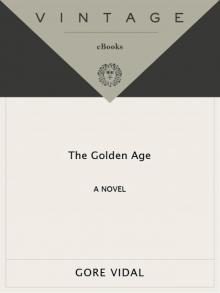 The Golden Age: A Novel
The Golden Age: A Novel Death Before Bedtime
Death Before Bedtime Burr
Burr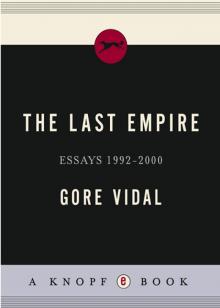 The Last Empire
The Last Empire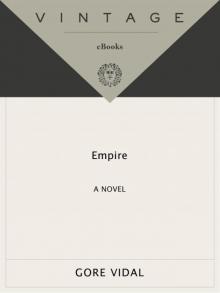 Empire: A Novel
Empire: A Novel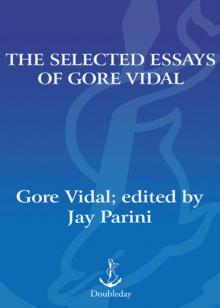 The Selected Essays of Gore Vidal
The Selected Essays of Gore Vidal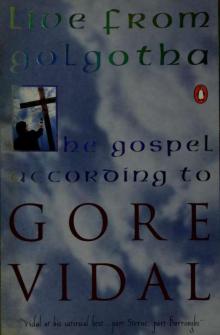 Live From Golgotha
Live From Golgotha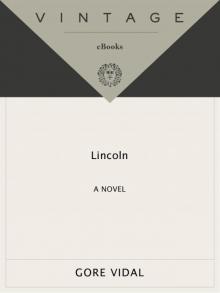 Lincoln
Lincoln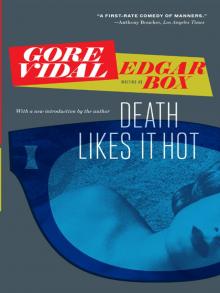 Death Likes It Hot
Death Likes It Hot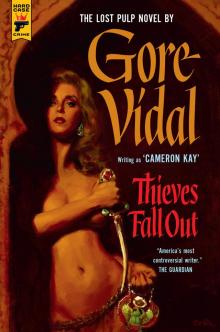 Thieves Fall Out (Hard Case Crime)
Thieves Fall Out (Hard Case Crime)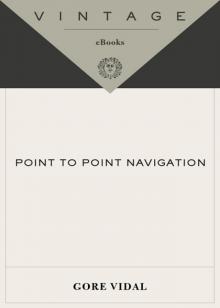 Point to Point Navigation
Point to Point Navigation Williwaw
Williwaw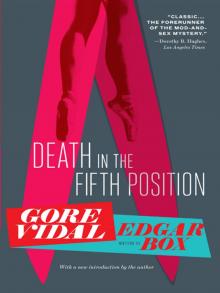 Death in the Fifth Position
Death in the Fifth Position In a Yellow Wood
In a Yellow Wood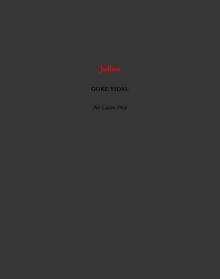 Julian
Julian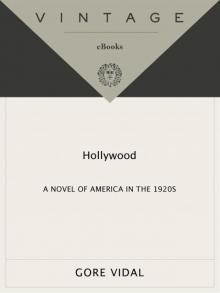 Hollywood
Hollywood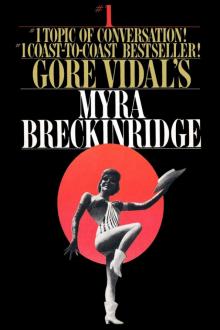 Myra Breckinridge
Myra Breckinridge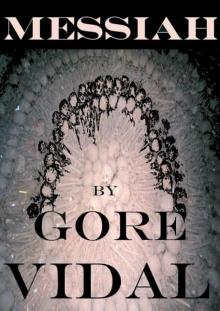 Messiah
Messiah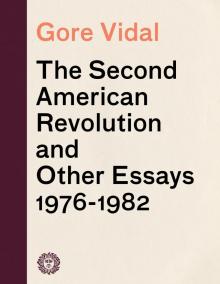 The Second American Revolution and Other Essays 1976--1982
The Second American Revolution and Other Essays 1976--1982 Homage to Daniel Shays
Homage to Daniel Shays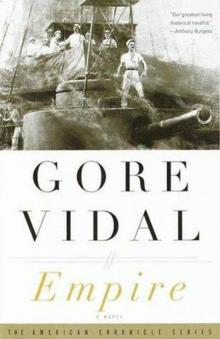 Empire
Empire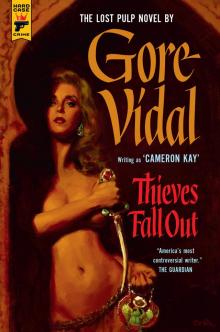 Thieves Fall Out
Thieves Fall Out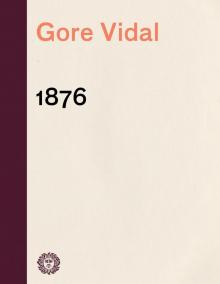 1876
1876 The City and the Pillar
The City and the Pillar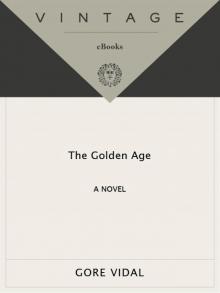 The Golden Age
The Golden Age At Home
At Home